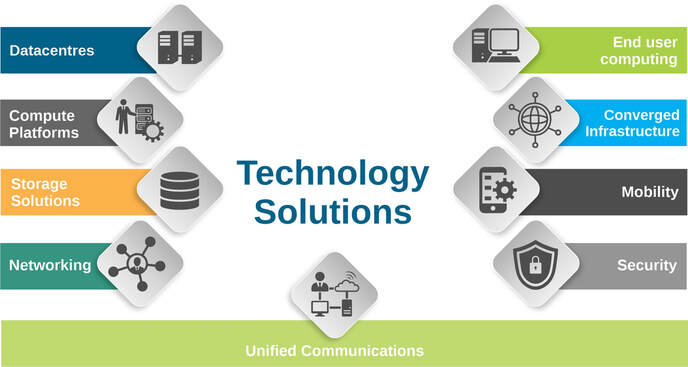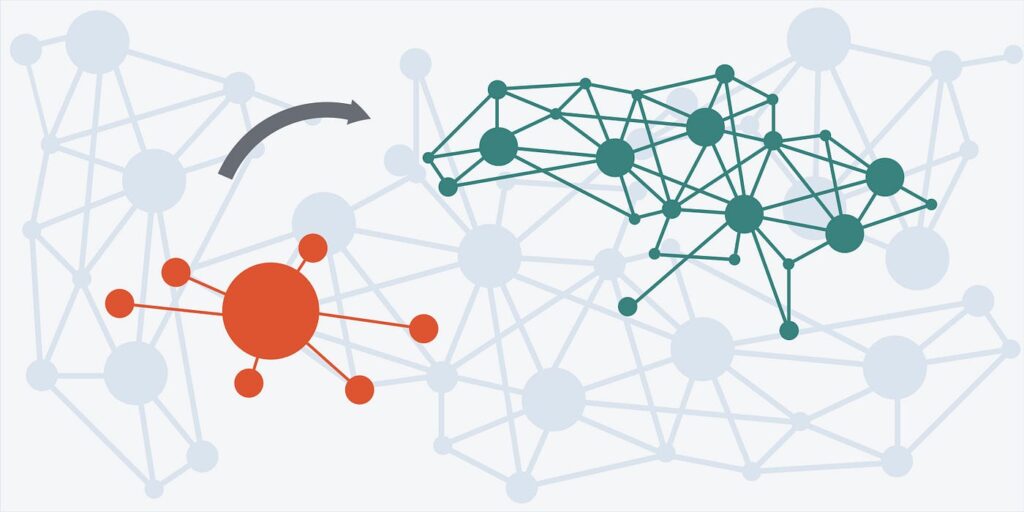Company policies and procedures form the bedrock of any organization’s framework. They define the rules, standards, and guidelines that govern operations, employee conduct, and decision-making. Whether an organization is centralized or decentralized, ensuring consistency in policies and procedures is essential. However, achieving this consistency can be a challenge, given the distinct operational structures and management approaches of these two types of organizations. In this article, we’ll explore the best practices for maintaining uniformity in company policies and procedures while considering the unique characteristics and challenges of both centralized and decentralized organizations.
Understanding Centralized and Decentralized Organizations
Before delving into the best practices for consistency in company policies and procedures, here are the fundamental differences between centralized and decentralized organizations.

Centralized Organization: In a centralized organization, decision-making authority, including the development and enforcement of policies and procedures, is concentrated at the top of the hierarchy. Centralized organizations often have a strict chain of command, with clear reporting lines and standardized processes. Policies and procedures are typically established and enforced uniformly across the entire organization.
Decentralized Organization: A decentralized organization, on the other hand, grants a degree of decision-making autonomy to various departments or units. These units may have more authority to create and implement policies and procedures specific to their functions or regions. Decentralized organizations tend to adapt to local needs and may have a more flexible structure.
Best Practices for Consistency in Centralized Organizations
Maintaining consistency in policies and procedures within a centralized organization is generally more straightforward due to the top-down approach to management. Here are some best practices for maintaininguniformity:
- Centralized Policy Development: Establish a dedicated team or department responsible for policy development. Ensure that policies are developed centrally and disseminated consistently across the organization. Centralization allows for standardized, company-wide policies.
- Regular Review and Updates: Implement a systematic process for reviewing and updating policies on a regular basis. Centralized organizations should ensure that any changes are communicated promptly to all stakeholders to maintain consistency.
- Clear Communication: Ensure that policies and procedure changes are communicated clearly and promptly to all employees. Consider using a centralized communication platform or intranet for easy access to updated documents.
- Training and Awareness: Provide training and awareness programs to educate employees on the company’s policies and procedures. Centralized training programs help ensure that all staff members are aware of and understand the rules and guidelines.
- Consolidated Documentation: Maintain a centralized repository or document management system for policies and procedures. This ensures that all documents are easily accessible and organized in one location.
Best Practices for Consistency in Decentralized Organizations
Consistency in decentralized organizations can be more challenging due to the diversity of operational units. However, with strategic approaches, it’s possible to achieve uniformity. Here are some best practices:
- Centralized Core Policies: Establish a set of core policies and procedures consistent across the organization. These policies should address fundamental areas, such as ethical conduct and safety.
- Customizable Templates: Provide policy templates that can be adapted to suit the unique needs of different units or regions. This allows for flexibility while maintaining a degree of consistency in structure and format.
- Standardized Processes: Encourage standardized processes where applicable. Some procedures, such as financial reporting or safety protocols, should follow a standardized format to ensure compliance and consistency.
- Clear Reporting Structure: Maintain a clear reporting structure that outlines which policies and procedures can be adjusted at the department or regional level and which must remain consistent throughout the organization.
- Regular Audits and Assessments: Conduct regular audits or assessments to ensure that departments or units are adhering to company policies and procedures. This helps identify inconsistencies and areas that require improvement.
Technology Solutions

In both centralized and decentralized organizations, technology can play a pivotal role in ensuring the consistency of policies and procedures.
- Policy Management Software: Invest in policy management software that allows for centralized policy creation, distribution, and tracking. These systems can also provide audit trails to monitor changes and user access.
- Document Collaboration Tools: Implement document collaboration tools to facilitate the development and modification of policies and procedures. These tools enable multiple stakeholders to collaborate on policy documents in real-time.
- Compliance Tracking Systems: Utilize compliance tracking systems that provide insights into the adherence of departments or units to company policies. These systems can flag inconsistencies or deviations.
- Centralized Intranet: Develop and maintain a centralized intranet or knowledge management system. This platform should serve as a central hub for all policy and procedure documents, ensuring easy access and distribution.
The Role of Leadership
Effective leadership is essential for fostering consistency within an organization’s policies and procedures. Regardless of whether the organization is centralized or decentralized, leaders do the following:
- Lead by Example: Leaders should be role models when it comes to adhering to company policies. They model the standard for employees at all levels.
- Communicate Expectations: Clearly communicate the importance of adhering to company policies and procedures. Reinforce the message that consistency is a key component of the organization’s success.
- Support Adaptation: In decentralized organizations, leaders should support departments in adapting policies and procedures to their specific needs, while also emphasizing the importance of core policy adherence.
- Foster a Culture of Accountability: Encourage a culture of accountability, where employees are responsible for their adherence to policies and procedures, and leaders are accountable for enforcing them consistently.
Ensuring Compliance and Accountability
- Consistency in policies and procedures is not just about their creation and distribution. It also involves ensuring compliance and accountability across the organization.
- Regular Audits and Reviews: Conduct regular internal audits and reviews to assess compliance with policies. Address any deviations promptly and take corrective action as necessary.
- Accountability Measures: Implement accountability measures that hold employees and management responsible for adhering to policies and procedures. This can include performance evaluations, incentives, or consequences for non-compliance.
- Feedback Mechanisms: Create channels for employees to provide feedback on the effectiveness and practicality of policies and procedures. This feedback can be valuable for making necessary adjustments and improvements.
- Whistleblower Protection: Ensure that employees feel safe reporting violations of policies and procedures. Whistleblower protection mechanisms should be in place to encourage transparency.
The Role of Continuous Improvement

Consistency in policies and procedures is an ongoing process. It requires a commitment to continuous improvement. Organizations should regularly assess and refine their policies, procedures, and approaches to maintaining consistency.
- Feedback: Establish a mechanism to obtain feedback from employees, managers, and leaders on the effectiveness of policies and procedures. Use this feedback to identify areas for improvement.
- Benchmarking: Compare your organization’s policies and procedures with industry best practices and benchmarks. This can highlight areas where adjustments are needed to maintain competitiveness and compliance.
- Adaptation to Change: Policies and procedures must adapt to changing business environments, regulatory requirements, and technological advancements. Regularly review and update them to remain relevant.
- Centralized and decentralized organizational structures represent two distinct approaches to management and decision-making, each with its own set of advantages and disadvantages. It’s important to note that the effectiveness of either structure can vary depending on the organization’s size, industry, and specific goals.
Centralized Organizations: Pros
- Efficient Decision-Making: In centralized organizations, decision-making authority is concentrated at the top, typically with senior management or a central governing body.
- Uniformity: Centralization allows for greater control and consistency in policies, procedures, and strategies. It ensures that all parts of the organization follow the same rules and standards.
- Cost Efficiency: By streamlining processes and reducing the need for duplicated efforts, centralized organizations can achieve cost efficiencies, particularly in resource allocation and procurement.
- Strong Leadership: Centralized structures often result in strong leadership, which can provide clear direction and accountability for the entire organization.
- Effective Resource Allocation: Resources are allocated strategically to support the organization’s overall goals, reducing redundancy and waste.
Centralized Organizations: Cons
- Lack of Flexibility: Centralization can limit an organization’s ability to adapt quickly to local or specific market conditions. It may result in a one-size-fits-all approach that doesn’t account for regional differences.
- Overburdened Leadership: Centralized decision-making places significant pressure on top-level management, potentially leading to bottlenecks and decision fatigue.
- Slow Response to Local Needs: Local teams or departments may feel frustrated by the lack of autonomy in decision-making, particularly when their unique needs are not addressed promptly.
- Risk of Bureaucracy: Centralized organizations are susceptible to developing bureaucratic structures that hinder innovation and agility.
- Lower Employee Engagement: Employees may feel disconnected from decision-making processes, leading to lower job satisfaction and engagement.
Decentralized Organizations: Pros

- Adaptability: Decentralized organizations can quickly adapt to local or market-specific needs, which is particularly advantageous in industries with diverse markets or rapidly changing conditions.
- Faster Decision-Making: Decentralization can lead to quicker decision-making at the local level, as it eliminates the need for approvals from a centralized authority.
- Enhanced Employee Engagement: Employees in decentralized structures often have more autonomy and responsibility, leading to higher job satisfaction and engagement.
- Innovation: Decentralization encourages innovation and creativity at various levels of the organization, as employees are empowered to make decisions and propose improvements.
- Market Responsiveness: Decentralized organizations can respond more effectively to market demands and customer preferences, as local units have the freedom to tailor their strategies.
Decentralized Organizations: Cons
- Inconsistent Practices: Decentralization can lead to variations in practices, policies, and procedures across different parts of the organization, potentially causing confusion and inefficiency.
- Lack of Control: Central leadership may have limited oversight and control, which can be problematic when trying to enforce company-wide policies, quality standards, or values.
- Resource Duplication: Decentralized structures may result in redundant efforts and resources, as individual units may procure services or resources independently.
- Risk of Isolation: Local units may become isolated from the broader organization, potentially missing out on valuable insights, resources, or collaboration opportunities.
- Complex Communication: Maintaining clear communication and coordination across a decentralized organization can be challenging, especially as the organization grows.
In summary, the choice between a centralized and decentralized organizational structure depends on an organization’s specific goals, industry, and operational context.
Centralized structures offer efficiency, uniformity, and strong leadership, but may lack adaptability and responsiveness. Decentralized structures foster adaptability, innovation, and employee engagement but may face challenges related to consistency and coordination.
Many organizations today employ hybrid models, combining elements of both centralized and decentralized structures to capitalize on the strengths of each while mitigating their respective weaknesses.
Also read: The 10 Qualities of Successful Interim Project Professionals

